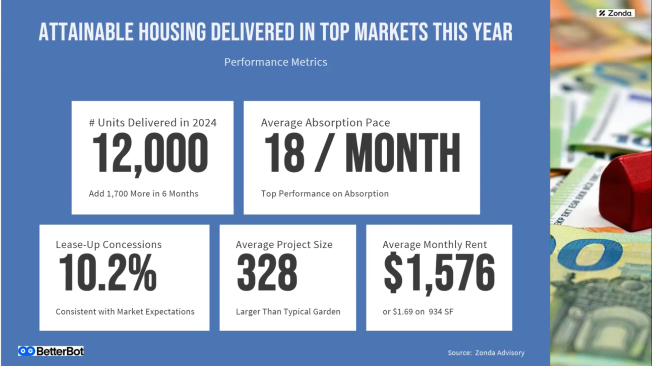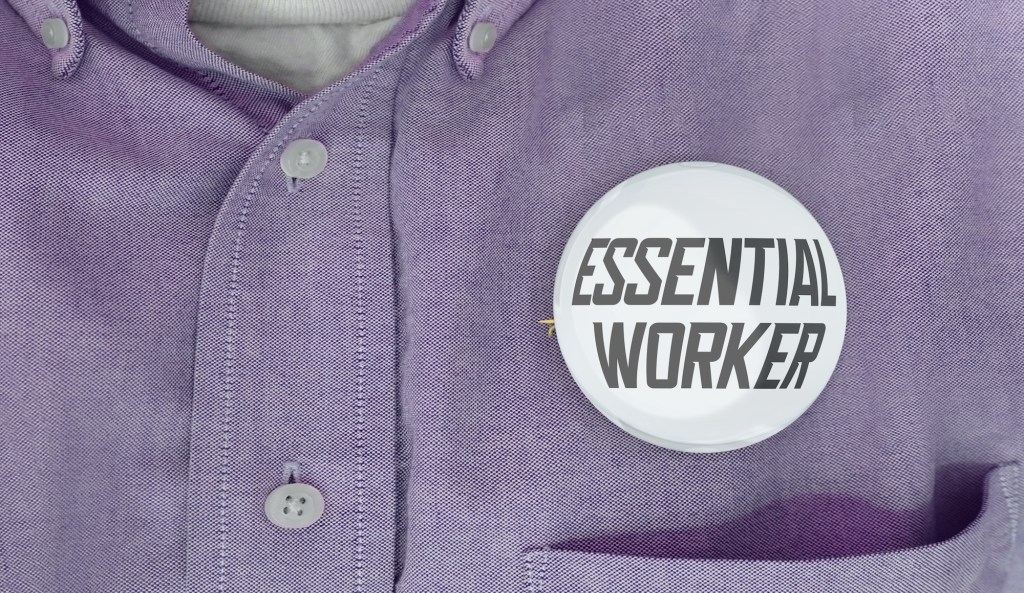As the nation continues to face an affordability crisis, multifamily developers are diversifying with attainable housing product lines.
This housing typically targets incomes at 80% to 120% of the area median income, is non-subsidized, and has rents that are market-driven and vary by each market, said Kimberly Byrum, managing principal for multifamily at Zonda, on her recent Multifamily Market Update webinar.
Want to Learn More?
Zonda’s Kimberly Byrum is moderating the “Unlocking Access: Strategies for Attainability” panel at the MFE Conference, which will be held Sept. 30 to Oct. 2 at the Fontainebleau Las Vegas. She’ll be joined by Jeff Goll, managing director at Hillpointe; Patricia Watts, co-founder of Greenlight Communities; and Jonathan Wolf, founder and CEO of Wendover Housing Partners, to explore approaches and share case studies for enhancing attainability within multifamily developments. To register or for more information, visit mfeconference.com.
“The target market for this housing is essential workers—teachers, nurses, firefighters,” she said. “Attainable housing is a benefit to the community in that it can alleviate housing pressure without devaluing our neighborhoods.”
Byrum said the product is sometimes a little different and smaller than traditional multifamily housing with limited floor plans.
“The way that attainable housing is being developed is with cost savings in mind,” she said. “A lot of these mature builders are getting into this marketplace with the knowledge that they have on how to make things efficient and are doing site selection based on cost criteria. While the interiors seem to mimic somewhat luxury, they really are intended to be durable with things like plank flooring, granite countertops, side-by-side washers and dryers, and stainless steel appliances.”
During the webinar, Byrum outlined her attainable housing scorecard for the sector’s performance in markets where Zonda is active. So far in 2024, she has identified approximately 12,000 units that are currently in lease-up under the attainable housing model, with 1,700 more units that will deliver into the market with the next six months.

Attainable housing is absorbing at the top of the class, doing 18 units a month on average. In addition, it is matching the market on lease-up concessions. The average monthly rent is $1,576, or $1.69 per square foot on 934 square feet.
The average project size for attainable housing is 328 units, which is larger than a typical garden-style community. “That makes sense from a cost savings standpoint because you need to spread your costs over more units,” she added.
According to Byrum, Houston has been the largest market seeing attainable housing units delivered this year, followed by Phoenix; Dallas; Charlotte, North Carolina; Atlanta; and San Antonio.
“We are not seeing as much in Austin, Texas, and I’m sure developers are just avoiding Austin because of the pipeline,” she noted. “And we are starting to see the product pop up in some of the Florida and Carolina markets.”
Several developers have been active in the space for years, while others are just starting to unveil their brands. These include:
- Alliance Residential, Prose;
- Greystar, Ltd.;
- Greenlight Communities, Cabana;
- Mill Creek Residential, Beckett by Mill Creek;
- Quarterra, Emblem;
- Trammell Crow Residential, Allora; and
- Wood Partners, Alterra.
“Overall, it’s a really interesting product type that is creeping up in the market and can be a great way to solve problems for affordable housing and essential workers,” Byrum concluded.
